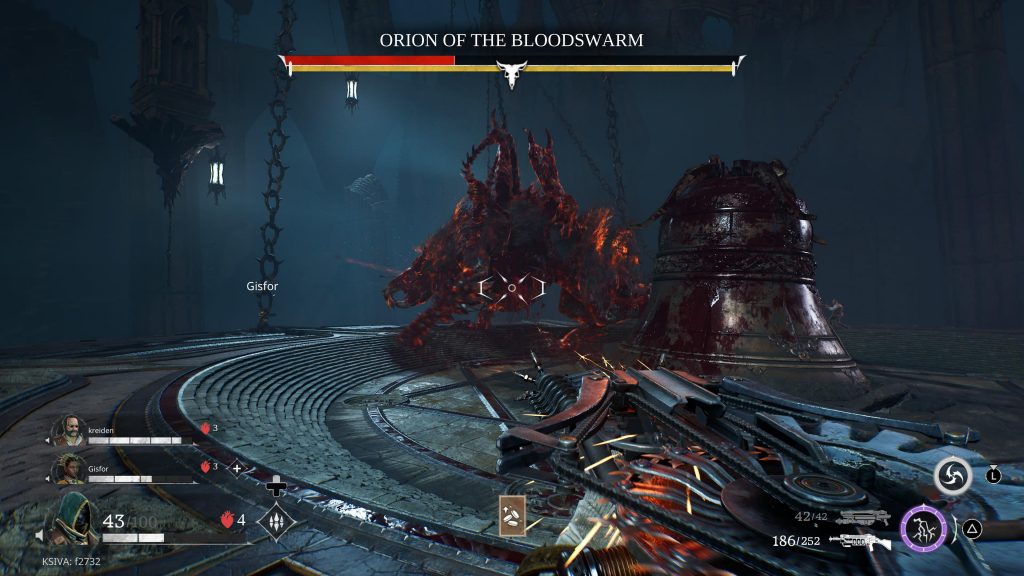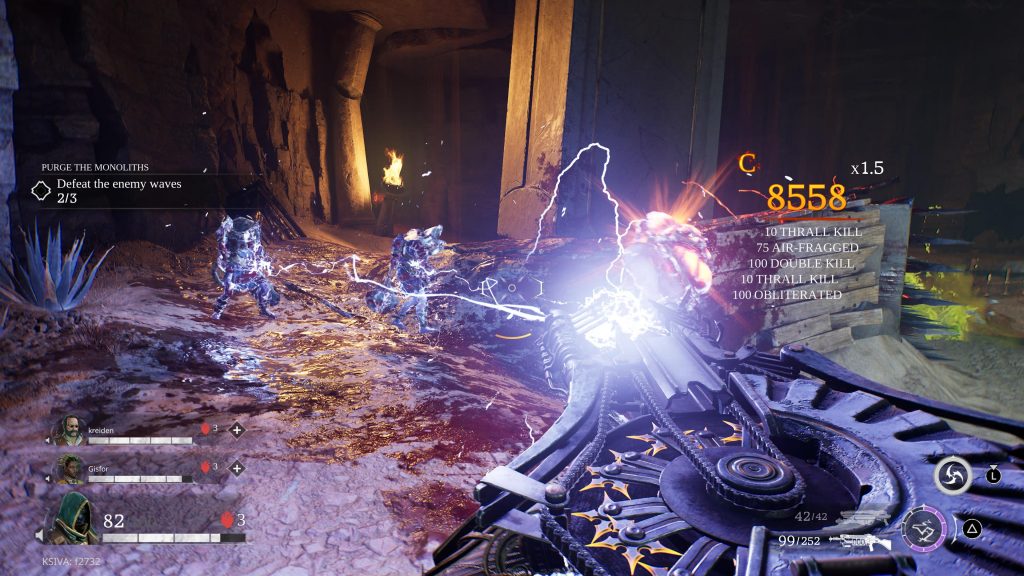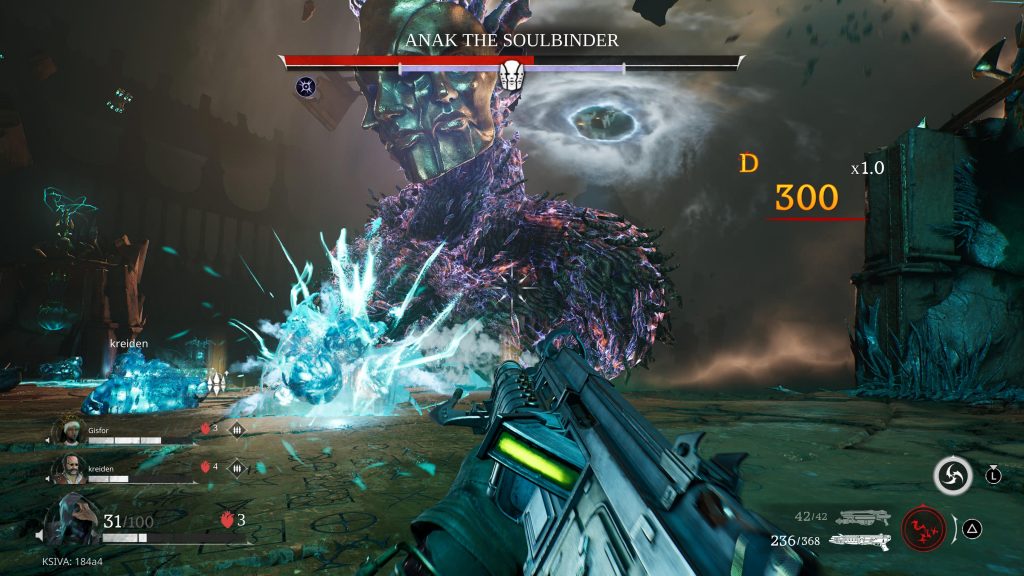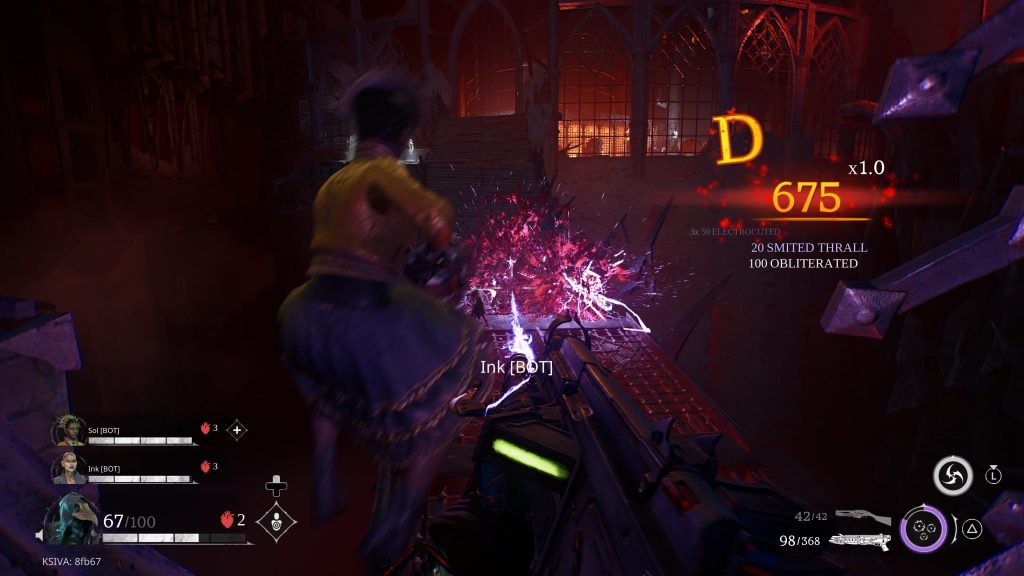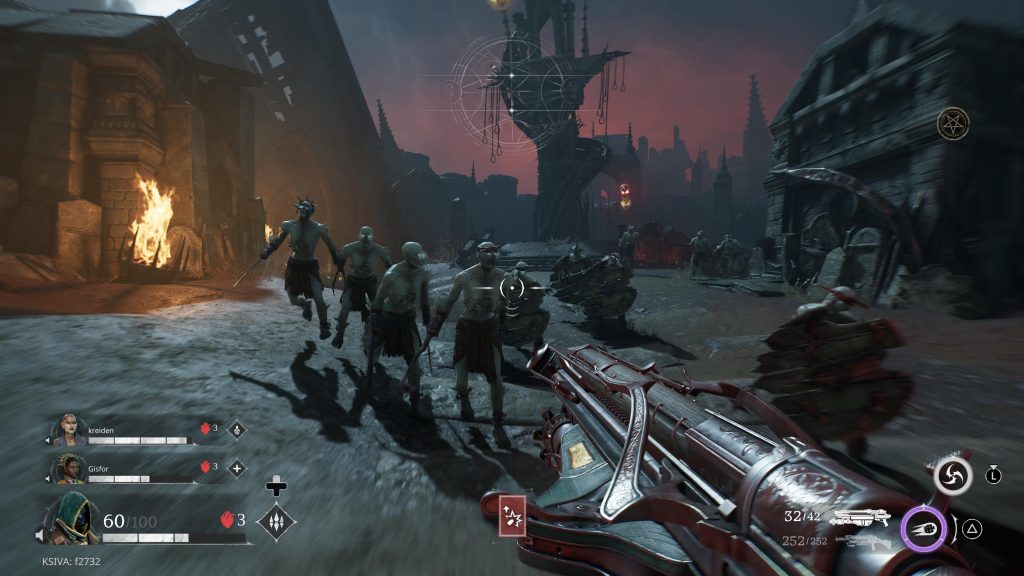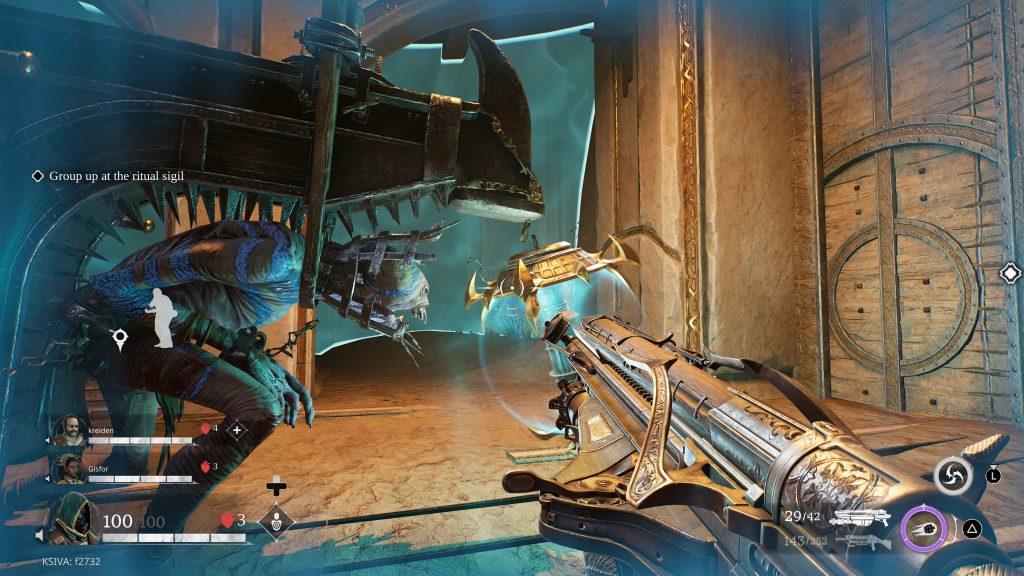Painkiller is a co-op focused first-person shooter and is a reboot of a 2004 game that bears the same name (always fun when you’re trying to find tips and tricks for the new one but whatever). The original game’s devs, People Can Fly (responsible for Outriders and the brilliant Bulletstorm but now seemingly stuck in VR and Gears of War hell) haven’t returned for this one and instead coding duties have been handed over to Polish developers Anshar Studios.
The original Painkiller was a single-player affair where you played as Daniel Garner, a man tasked with saving Purgatory from Lucifer’s generals in order to be reunited with his wife Catherine in heaven. It was big, bold, fast and action-packed and also spawned a lot of expansions. All of these continue the original Painkiller story.
So, it’s quite surprising that this new game does away with all of that world-building. Daniel Garner is gone and instead you just play as one of four lost souls who again are tasked with taking out Lucifer’s forces in the on-going war between Heaven and Hell. And aside from some narration from the Metatron, you can pretty much ignore the story.
After a quick tutorial where you learn all about shooting, jumping and, for some reason, being able to slide for really long distances, you’ll end up in the lobby area. Here you can party up with two other players or bots if you’ve got any empty spaces. The game insists that you’re always in a squad of three. In this area you can purchase and upgrade weapons, each of which have their own upgrade paths, and you can buy tarot cards which are powerful modifiers that can aid you in your next run.
There’s not a ton of stuff to do in this area though and so you’ll soon find yourself taking on the game’s campaign which features three “biomes” and each of these has three stages, each of which last around twenty minutes. So, nine stages, 3-4 hours of gameplay.
The stages all kind of play out the same. They’re basically a linear sequence of arenas, connected by a few paths and rooms, and the whole time you’ll be besieged by various demonic foes. There’s a little bit of platforming and exploration but mainly this game is all about the blasting. And when you get to an arena you’ll be tasked with either clearing out waves of enemies or some sort of biome-specific task. The first biome has you filling up ‘blood tanks’ by killing enemies near them, the second sees you placing ‘soul cages’ in various places and the third has you standing in areas for long enough to clear them. Each biome is also punctuated by a ‘Nephilim’ which is a suitably epic boss.
It’s enough to break up the pace and make life a little more difficult but, don’t get it twisted, it’s still all about shooting enemies. And that’s what Painkiller does best. The six guns on offer all have their own abilities and alternate firing modes. It’s quite something to fire off a freeze bomb and then shatter a load of enemies all with the same SMG or upgrade your stakegun to fire off homing stakes. We particularly enjoyed turning the SMG into an electric weapon that chains between enemies, stunning them and causing them to explode.
It’s tremendous fun and there are a lot of combinations to experiment with. It’s a shame that the upgrade paths are exclusive though meaning you have to spend the in-game currency (souls) to try out the other functionality rather than being able to have it all or at least preview the changes.
The other weapon is the titular Painkiller itself. Imagine the lawnmower scene from Braindead (if you’ve not seen it, stop reading and go and see why Peter Jackson’s best films all came before the Lord of the Rings trilogy). It’s a spinning blade that operates in melee range. Spin it up and start walking. It’s fun, gruesome and also has a strategic use case as it generates ammo for you. Neat.
When it’s all flowing well and you’ve got a good squad of players, Painkiller is very enjoyable but there’s always that feeling that it’s a little bit thin. You see, they’ve gone down the same route as games like FBC Firebreak and Aliens: Fireteam Elite where there’s really not very much content on offer and the expectation is that you’ll be happy replaying it all on harder difficulties but Painkiller doesn’t really incentivise it. There’s no player skill tree to work through or fun loot to find. And even in one playthrough, the three biomes all kind of feel and play the same. There’s a day or two’s worth of game here and given that it’s so online-focused, there needs to be more to do or it’ll die off quickly. Just look at Fireteam Elite, no-one was bothering with that game after the first week.
There’s a lot of potential here but it feels like it would have made a better single-player, story-focused game. Indeed, fans of the original 2004 game probably would have taken a straight remaster over this. Having beaten the game once, we’re now starting to feel like we’re in our own purgatory having to beat it again and again.
It’s all quite nicely presented though. The game zips around at Unreal Tournament speed and with the gibs to match. There’s so much pace and blood that getting useable screenshots is harder on this game than anything else we’ve played.
It’s all very nicely detailed though. The actual design is a little drab, it is Purgatory after all, but that mix of blandness and high-resolution gives the game a sort of Remnant: From the Ashes look. Great quality but not necessarily attractive. That said, the darkness and limited colour palette can make it a little hard to see what’s going on at times but it’s not really an issue as what’s going on is that you’re blasting all the time so don’t worry about finessing it.
The audio is pretty prominent too with generic heavy metal blasting out all the time (albeit mainly sounding like a Temu version of Fear Factory most of the time), big booming sound effects and voice acting/narration too. We’re definitely giving our sound bar a workout with this one.
But ultimately it’ll be content that makes or breaks Painkiller. Sure, there’s a day or two’s worth of fun to be had. More if you want to work through the game’s trophy list. And we’re pleased that the game’s bot players are actually very competent too, so solo players are catered for also. But it’s a bit basic, albeit with an old-school charm, and more than a little thin, especially for £34.99.
+ Has an Unreal Tournament feel
+ Well-presented
- Repetitive
- Lacks content


